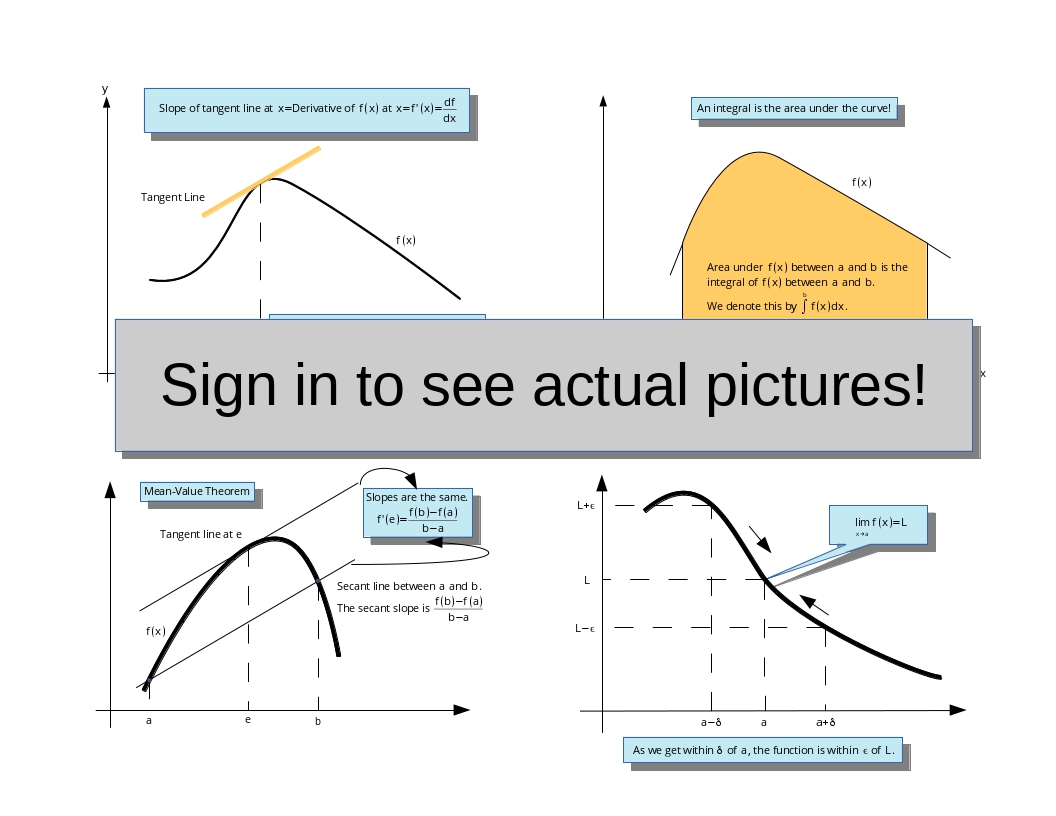Differentiation I: An Overview of Differential Calculus
Primary tabs
SAMPLE LESSON
Sign in for easy to read lessons narrowly focused on a specific subject. All lessons are linked to each other allowing you to easily see the connections between different Calculus concepts. Our unique Calcmap will give you a bird's-eye view of all our lessons and help you see how important concepts are related to each other. All of the formulas are available to our subscribers, but here is a sample of the lesson you will see when you log in:
Differential calculus is the study of the slopes of functions and their application to real world problems. Recall that the slope of a straight line is its "rise" over its "run":
<Sign in to see all the formulas>
More importantly, we can determine the slope anywhere along the straight line and always get the same answer.However, for any other function, the slope can be different depending upon where we look. For example, the picture below shows that the function <Sign in to see all the formulas> has a slope of -10 at x=−5, 0 at x=0, and 4 at x=2. So depending on where we are at on the x-axis, our slope will be different from point to point.

There are typically two common notations for the slope of a function. The slope of a function at a point x of a function f(x) can be denoted by
<Sign in to see all the formulas>
and is typically called the "derivative" of the function or more formally " the derivative of 'f' with respect to 'x'."
So why is the slope of a function so important that we have an entire branch of mathematics for it? Because there are many real world phenomenon that are described by the slope of a function. Many things in life depend upon something else. In those situations we are also wanting to know how one variable changes with respect to another. Here are some examples:
| Derivatives In The Real World |
|---|
|
|
|
|
|
|
|
So now that we have a basic understanding of derivatives and what they are used for, here is how we actually find the derivative of a function.
